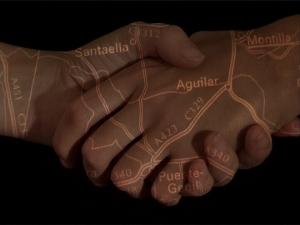Video as Urban Condition
dal 20/6/2004 al 1/7/2004
Segnalato da
Anthony Auerbach, visual arts co-ordinator
20/6/2004
Video as Urban Condition
Austrian Cultural Forum London, London
Moving images from central Europe: a project exploring how video shapes urban experience. Video as Urban Condition means acknowledging the myriad channels through which video is produced, delivered and consumed in contemporary society.

(moving images from central Europe)
Video as Urban Condition is a project exploring how video shapes urban experience. Video as Urban Condition means acknowledging the myriad channels through which video is produced, delivered and consumed in contemporary society.
Dates
The first stage of the project opens on 21 June with the presentation of the Video-pool (open to the public Monday–Friday, 0900–1700h) and ends with the symposium on Friday 2 July 2004 at 1400h at the Austrian Cultural Forum London.
People
Taking part in the symposium are: Anna McCarthy (Tisch School of Arts, New York, author of Ambient Television), Juha Huuskonen (media artist and VJ, organiser of Amfibio and Pixelache, Helsinki), Manu Luksch (media artists and film maker), Paul O'Connor (independent producer, founder of Undercurrents News Network), Ole Scheeren (architect, partner in Office of Metropolitan Architecture, Rotterdam). Chaired by Anthony Auerbach.
Support
Video as Urban Condition (stage 1) is supported by Austrian Cultural Forum London and the Arts Council of England with additional assistance from the Embassy of Finland, London and the Royal Netherlands Embassy, London.
Images
The visual presentation is intended to illustrate some of the urban phenomena we are interested in and some responses to the condition by artists, film-makers and architects.
Project
Video as Urban Condition examines the ways in which video has become part of the urban fabric: the omnipresent screen and the watchful eye that inhabits private and public space. Here, video is the ubiquitous equipment of the home, the street and the work place: the tube, the box, the telly, CCTV, info-screen, electronic billboard, in-store advertising, mobile, terrestrial, cable, satellite, pay-per-view, downloadable, for sale, to rent. The project also examines how our knowledge, perception and fantasy of urban environments are mediated by video. Here, video is the mass-medium of innumerable fragments, multi-channel, remote control, camcorder, games console, webcam, public service broadcasting, MTV, 24-hour news, reality TV, soap opera, family entertainment, pornography, home video.
The participants in the project represent a wide range of practices, interests and locations within the field. What they have in common is what we all share in modern urban life. They do not regard video as an art-specialism, media-sector or single-purpose tool.
The project examines a medium whose most distinctive characteristics are multiplicity and diversity, a form which is not contained by the norms of art institutions or the exclusive domains of professionals. Video is increasingly a medium of mass production—that is, mass participation—as well as of mass consumption. The accessibility of video technology has encouraged not only the private interests of home video and independent artistic activity, but has also prompted community and educational initiatives putting the medium in the hands of underprivileged or excluded groups in society. Video technology has moreover become established among the tools of communication and witness at the disposal of activists and campaigners who maintain a position beyond the main stream. The project recognises the diversity of activity in the field and challenges artists to reflect on how the relations of representation in society are mediated by video.
The project Video as Urban Condition is envisaged in two stages: 1. an international symposium and 'pool' archive, followed later by 2. an international touring exhibition of commissioned works. The aim of the symposium is to establish and make public the grounds for commissioning works for the touring exhibition and to establish an intellectual platform on which to proceed.
The project was initiated by Anthony Auerbach in collaboration with architect and filmmaker Clare Gerrard for the ACF Visual Arts Programme. The project is managed by Vargas Organisation, London. The project team consists of Anthony Auerbach (artist, ACF visual arts co-ordinator), Diana Baldon (curator), Manu Luksch (film-maker and media artist, founder AmbientTV.net) and Mo-Ling Chui (assistant).
Pool
The pool archive will be accessible to the public. The contents are intended to help set the agenda of the symposium and provide concrete points for discussion. Each participant in the symposium is invited to contribute a selection, based on their own interpretation of Video as Urban Condition.
Image: Amniotic City, ELASTIC Group (Alexandro Ladaga & Silvia Manteiga)
Venue: Austrian Cultural Forum London
28 Rutland Gate
London



